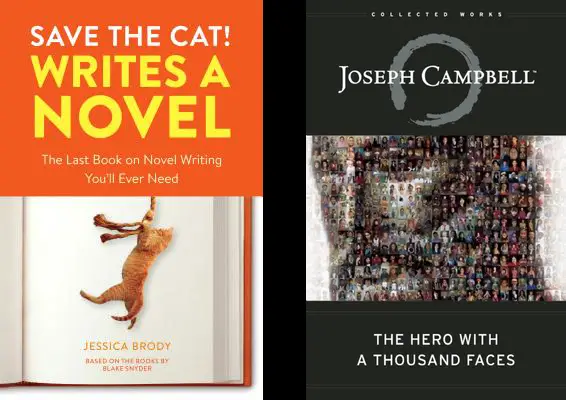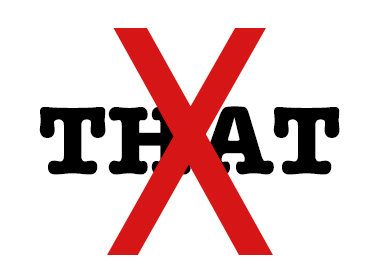I’ve been fortunate enough to have five novels published, have received positive reviews in the NY Times, and had one of my books translated into 11 languages. But I’ve also worked hard to get here.
As someone who dropped out of NYU film school to go on the road with a punk band in the mid 1980s, I had very little formal training as a writer. I learned my craft by talking with other writers, by workshopping my own stories, and by reading…a lot of reading.
Whether you’re a new writer, or a more experienced writer starting to take your craft more seriously, this article will provide foundational advice to help you start and finish your long-form narrative fiction project.
#1 – Read Every Day
Duh. Right? But you’d be surprised how many writers don’t read regularly. It’s like trying to be a hockey player without also being a good skater. It just doesn’t make sense.

Good writing is built on a foundation of good reading.
So, how can you be a good reader? In addition to reading every day (or almost every day), read outside your comfort zone. If you love science fiction, and you’re writing science fiction, you should, of course, read science fiction. But you should also read outside your genre.
Read a contemporary novel. Read a screenplay. Read a memoir. And, importantly, read poetry.
Reading poetry will infuse your writing with meter, pace, and lyricism.
There are a wealth contemporary poetry collections, but I also recommend reading Shakespeare’s Sonnets.
As the character Mr. Morgan says in 10 Things I Hate About You, “I know Shakespeare’s a dead white guy, but he knows his shit.” Truth.
No matter what you choose, turn off the TV, put down your phone, and read. (Unless, of course, you read on your phone.)
#2 – Write Every Day
I have friends who binge write.
They’ll bang out material over a 10- or 12-hour stretch and then not write again for two weeks. I suppose you can make this work, but if you’re a new writer, you should develop good habits from the start.
This includes writing for a minimum of 30 minutes four to five days a week. (If your schedule allows you to write an hour or two each of those four or five days a week, all the better).
But even 30 minutes will make a difference. It’s also really hard to make an excuse not to write when you’re only committing to half an hour.
There is no better guard against writer’s block than writing consistently.
In the same way that daily stretching and exercise build muscle memory, daily writing strengthens the tools you need to advance the work you’re doing. If you write often enough, you’ll say goodbye to writer’s block forever.
Give yourself a desired word count. Start with 250 or 500 words and grow from there.
If you do hit a wall with a project, take a day or two off from that project and write something else. Cleansing the palette will almost always help. But don’t take a few days off from writing. At least, not often. If you do, it will be hard to go back.
#3 – The Power of Observation
A writer’s job is to chronicle the human condition. Whether you’re writing satire, a romantic comedy, or a noir thriller, you’re translating your observations about what it means to be human—and the struggles of one particular human (your protagonist)—in a way that will resonate with readers.
To this end, the most important tool for a writer is the power of observation.
This is not simply how you see the world around you, but also how you hear, touch, taste, and smell the world around you. Look at the wall in the room in which you sit. (If you’re outside, look at the view directly in front of you.) Is it a white wall? Is it off-white? Does it have scuff marks? Is there anything—art, photos, a clock—hanging on the wall? Are there any sounds in the room? An HVAC system? A ticking clock?
The more detail you train yourself to observe, the richer your writing will become. And there’s an underlying message here, too. If you want to observe the world, you have to be an active participant in it. When you’re done reading and writing every day, go skating, play poker, jump out of an airplane.
Leave your house, apartment, or dorm room and live. It will make your writing better.
#4 – Create an Outline
Are you a plotter or a pantser?
A pantser is someone who sits at the computer and just starts writing, making things up as they go along. A plotter outlines and plans ahead. I’ll admit, I’m a recovering pantser. It’s a much harder way to live.
So, how do you become a plotter? Ask yourself a few simple questions before you start writing.
1. WHO IS YOUR MAIN CHARACTER?
To get to know your main character, you might consider writing a one- or two-page character biography. What’s their back story? What has shaped this person outside of the story? Are they an introvert or an extrovert? Are they funny? Confident? Awkward? Do they have a special skill that will impact their journey?
One good exercise is to take a Myers Briggs test as if you were your character. It will give you great insight into who they are.
2. WHAT IS THEIR CHARACTER ARC?
Every protagonist in every good story has a character arc. That is, they change or grow in some meaningful way from the beginning to the end of the story. An obvious example is Frodo Baggins.
He’s an unassuming Hobbit in a little-known part of Middle Earth when the Lord of the Rings opens. By the time the story ends (spoiler alert), Frodo is a hero on the scale of legends. At his core, he’s still Frodo, but he’s also so much more.
Know how your character will grow and change before you start. You can always change your mind later.
3. WHAT ARE THE MAJOR PLOT POINTS OR BEATS IN YOUR STORY?
This topic is dealt with in detail in Jessica Brody’s brilliant Save the Cat Writes a Novel, and in Joseph Campbell’s Hero with a Thousand Faces, so I’ll only scratch the surface here.

Almost every good story follows a certain pattern: A common person is called to action. They initially refuse the call before, often on the advice of a wise counselor, accepting the challenge. They cross from their known universe into an unknown world, face many challenges, reap their reward, and return home changed.
This is a very dumbed-down version of The Hero’s Journey as outlined by Joseph Campbell, but you get the gist.
The point is, you should think about your story before you sit down to write. Take some time and outline what you think will happen. Who are the major characters? How will they propel or impede your protagonist? Again, you can change it later, but having a road map is invaluable.
While I know this sounds formulaic, it’s actually not. The entire thesis of Campbell’s book is that humans relate to stories that follow a fairly predictable paradigm. In fact, some of the European fairy tales we in the West find so familiar have very similar counterparts in other cultures around the world.
#5 – Don’t Look Back
Okay, working with your outline, you write 500 words on your first day. Good for you!
On your second day, you want to see how well you did, so you go back and re-read those 500 words. They’re good, you think, but they could be better, so you re-write them.
On the third day, you realize that some of what you had on day one was actually better than the re-write, so you go back and edit again.
By the time you get to day four, you’ve still only written 500 words, and you have not advanced the story at all since the first day. And given your approach on days two and three, you’re probably going to edit again on day four.
Stop!

If you’re writing long-form fiction, you need to push through to the end of the story without looking back, or at least not substantially so.
I’ll generally re-read the last few paragraphs I wrote yesterday to get my mind back into the story today but never further back than that. This is much harder than it sounds. Those pages are going to be calling to you, begging you to re-read them. Don’t do it. You will fall into an endless loop of editing and re-editing and your project will remain forever unfinished.
“But Len,” you might say, “I introduced a character on page six that, now, on page 39, I realize doesn’t help the story.”
First, good for you for realizing that! Second, don’t worry about it. You are going to do a substantial rewrite – probably several rewrites — when you’re done. But you can only do that WHEN YOU’RE DONE!
Keep notes about changes you might want to make directly in your document or in another file, but don’t go back and edit. Push through to the end.
A very wise author (Amy Kaufman of Illuminae fame) once said the distance between writing zero books and one book is infinitely great than the distance between writing one book and two books. I’m paraphrasing, but it’s true.
Finish the first draft of your book, and the rest will come more easily. And you can’t finish that first draft if you keep going back and revising. Push through to the end without looking back.
#6 – All Good Writing is Rewriting
Let me emphasize that point. All good writing is rewriting.
No one’s first draft is ready for prime time. Not yours, not mine, not anyone’s. Especially if you followed the advice in tip #5 above.
Once you make it to the end of your story — and be sure to pause a moment to celebrate the achievement! — the real work begins.
Most writers will go through at least one full rewrite, and often more than one. After that, they will go through several rounds of substantial edits.
When my agent sold the rights to The Scar Boys, my first novel, I cashed the advance check the publisher paid me, put my feet up, and waited for the NY Times review and the money to start rolling in.
What I got instead was the “edit letter” from my publisher, telling me everything that was wrong with the book.
“But,” I whined, “you paid me an advance…I thought you loved my book!”
“We do love the book. But we can make it stronger.”
And they-we did. My editor’s suggestions, followed by those of the copyeditor and proofreader, made The Scar Boys a much stronger book. Good enough, in fact, to get that nice review in the NY Times.
#7 – Cut THAT Out
“That” is one of the most overused and misused words in manuscripts. You can improve the quality of your writing by using this word sparingly.
Consider the following sentence from my third book, Life in a Fishbowl:
Was the part of his brain that he was using at that very moment the part with the brain tumor?
The word “that” appears twice in this sentence. Read the sentence again, this time omitting the first use of the word “that.”

Was the part of his brain he was using at that very moment the part with the brain tumor?
Then read it a third time, omitting the second use of the word that.
Was the part of his brain that he was using at very moment the part with the brain tumor?
You’ll find the first use of the word, while grammatically correct, is unnecessary, where the second instance of “that” is needed. The sentence should read:
Was the part of his brain he was using at that very moment the part with the brain tumor?
It still irks me that I didn’t catch this during the editing process. I mean, it still irks me I didn’t catch this during the editing process. (See what I did there?)
Do a search in your document for the word “that.” You’ll likely find hundreds of instances. Read each one aloud and cut the ones that aren’t absolutely necessary. It will make the writing flow much more smoothly. That’s a fact.
#8 – Word Echoes (echoes, echoes, echoes)
What is a word echo?
Look at this example:
Allison woke at five a.m. each morning, stretched the sleep out of her muscles, had a half cup of artisan coffee, and settled in to write in her journal. The exercise of writing stretched her mind in ways the monotony of her job never could.
Did you spot the word echo? If you said “stretched,” pat yourself on the back. Word echoes are repetitive uses of the same word in close proximity to one another.
This will cause readers to mentally stumble, pulling them out of the story. Be mindful of word echoes as you write, and change them when you find them while editing. “Write” and “writing” are word echoes in this example, too, but they’re here by design. As a general rule, it’s okay to use a word echo if you do so intentionally.
In this case, we might rewrite the paragraph to read:
Allison woke at five a.m. each morning, stretched the sleep out of her muscles, had a half cup of artisan coffee, and settled in to write in her journal. The act of writing exercised her mind in ways the monotony of her job never could.
Tune your mind to noticing word echoes while you’re editing. Catching these will make your writing tighter and more lean.
#9 – Hearing is Believing
When you feel like your edit is finished, go back to the beginning and read the entire work out loud.
Read slowly. Read deliberately. Use different voices for different characters. Act it as much as you read it.
Hearing your words, feeling the cadence, identifying those sentences that make you verbally trip, is invaluable. I guarantee an entire group of new edits will emerge from this exercise. You’ll also catch much of what we’ve already covered – overuse of “that,” word echoes, and more.
Depending on how long your piece is, this may take a while, but it’s more than worth the investment in time.
If you don’t already, I also encourage you to listen to audiobooks. They’re a great way to experience another writer’s work. And hopefully someday, your work, too.
#10 – Publishing
Publishing your work — whether through a traditional publishing process or self-publishing — is an article (or series of articles) all its own. That said, I’ll offer two words of advice about the publishing process here:
Patience and perseverance.
Publishing is a marathon, not a sprint. From finding an agent, to shopping a manuscript, to the editing process — that’s right, whether traditional or self-publishing, your work will go through at least one more round of substantive edits, and several rounds of copyedits — you need to brace yourself for a long road filled twists, turns, and setbacks. You’ll have many late-night hours questioning your worthiness as a writer. Do. Not. Give. Up!
If you take your craft seriously, if you’re open to constructive criticism and feedback, if you’re willing to write and rewrite and rewrite and rewrite again, you can and will succeed.
This article was adapted from my Skill Share course, 20 Tips for New Writers. Feel free to reach out to me with writing questions at len@lenvlahos.com.
